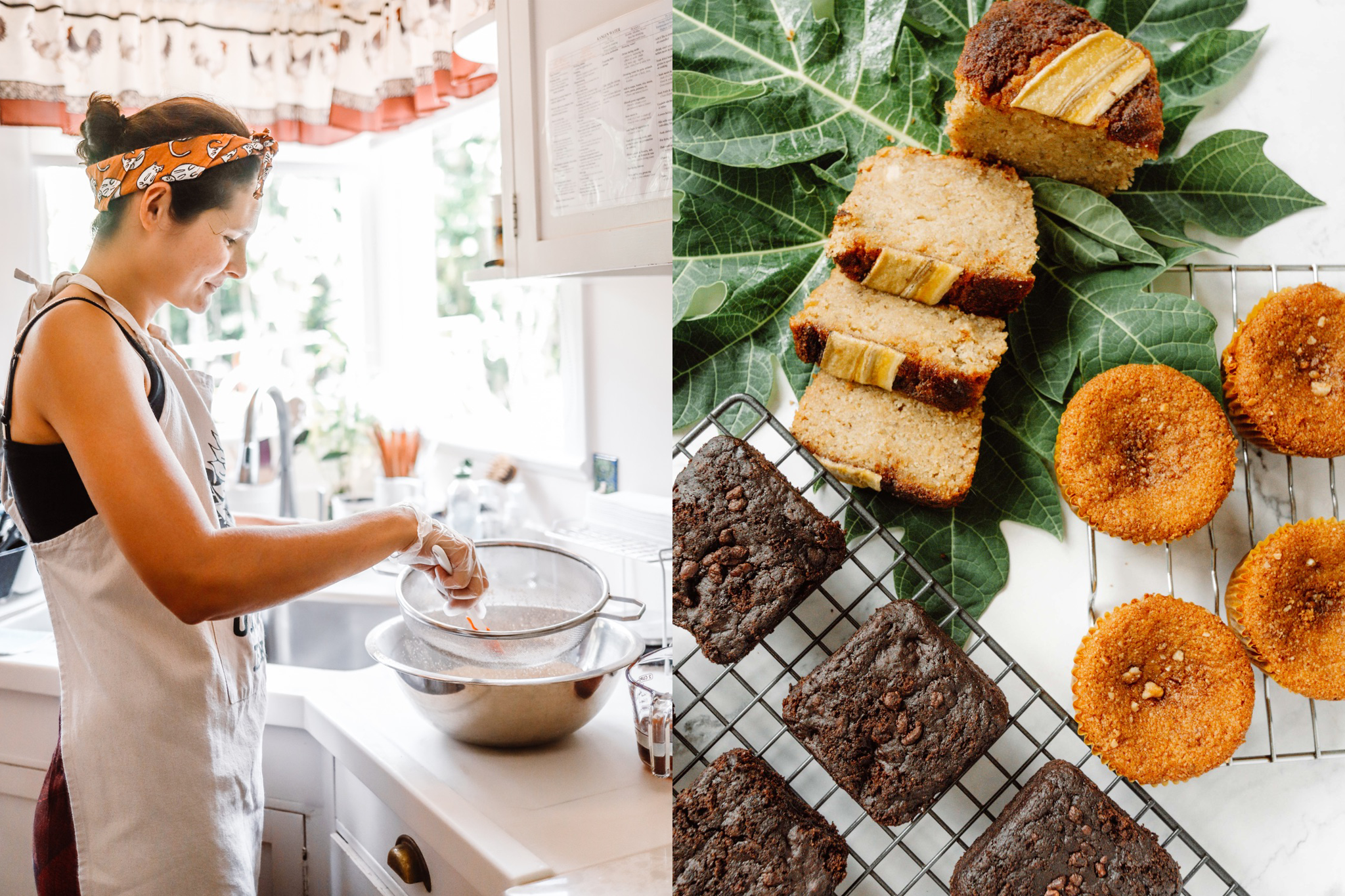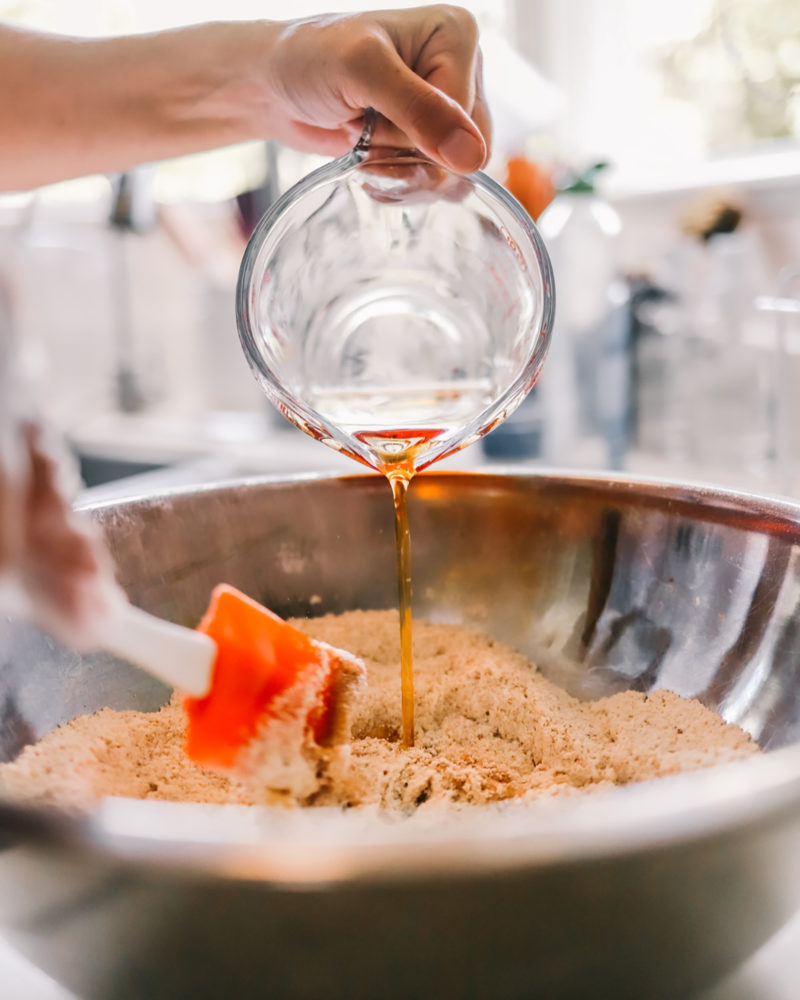The entrepreneur behind ‘Ulu and Kalo Bakery showcases the potential of one of Hawai‘i’s most sustainable crops.
What does Hawaiʻi’s food sovereignty have to do with mouth-watering cakes, crunchy cookies, and rich chocolate brownies? A lot, if you ask baker Maile Kamisugi. As the founder of ‘Ulu and Kalo Bakery, Kamisugi is part of a burgeoning community in Hawai‘i utilizing indigenous crops in modern, everyday eating.
In recent years, cooking with canoe plants — foundational plants that traveled across the ocean with Hawaiʻi’s first Polynesian settlers — has been on the rise. It’s a counter culture movement that is growing in response to Hawai‘i’s over-reliance on imported foods. In search of more sustainable alternatives, local farmers and chefs have begun turning to indigenous plants like ‘ulu (breadfruit) and kalo (taro), in an attempt to pivot toward a Hawaiʻi with a self-supporting food economy. Some, like Kamisugi, have harnessed the movement into a fledgling business.
Though born and raised in the islands, Kamisugi had never experimented with canoe plants in her cooking. After graduating from the University of Portland, she returned home to attend Kapi‘olani Community College’s culinary program. It was during this period of homecoming that a friend gave her a sweet, ripe ‘ulu to eat.
She quickly found that ‘ulu’s versatility in the kitchen lent itself for use in modern-day bakes: It can be dried and milled into gluten-free flour, or ripened and added to recipes as a natural sweetener. Kamisugi, a health-focused baker, was strict about the ingredients she incorporated, abstaining from gluten, refined sugar, and animal products like eggs or dairy. For her, ‘ulu and kalo, as essential cultural staples and native produce packed with nutrition, were the ideal ingredients to focus on. “They’re such an important part of Hawaiʻi’s culture,” she says. “You [can] serve them as-is, and anything from the ground is healthier.”
Kamisugi’s shop, which she started in her home kitchen in 2018, is best-known for her ‘ulu mai‘a bread, a twist on banana bread that incorporates locally grown breadfruit (and, of course, bananas). It’s not easy (the supply chain isn’t consistent), but Kamisugi strives to source her main ingredients in the islands. Many of her ‘ulu fruits come from homeowners with backyard trees, harvesting and milling them into flour herself. It’s a farm-to-table operation that keeps with the ethos of Canoe Plant Collective, a co-op of local businesses with a focus on food sovereignty, of which Kamisugi is a founding member.
Ultimately, Kamisugi wants her baked goods to have a lasting impact beyond the kitchen: a showcase of the potential of sustainably grown crops. Just like how that first sweet ‘ulu made her fall in love with canoe plants, she hopes that each ‘ulu and kalo pastry can inspire Hawai‘i’s health-focused home bakers too.
Here, Kamisugi shares tips for cooking with ‘ulu, plus a recipe to try at home.
Sourcing Your ‘Ulu
‘Ulu can usually be found at locally-minded grocery stores like Kokua Market, Down to Earth, and Tamashiro Market. Though not as readily available, farmers market stalls can also be a great resource. Even better, befriend a neighbor with a backyard ‘ulu tree to share your bakes with.
Identifying Ripeness
What you can do with an ‘ulu fruit typically depends on how ripe it is. If purchasing from the market, ask when it was harvested. Immature ones are bright green with no sap. It can be used like an artichoke or to make pickles. Mature ʻulu has a lot of sap covering it and can be prepared similar to a potato. Ripe ‘ulu is soft to the touch and great in sweet desserts.
Not Every ‘Ulu is the Same
When possible, inquire with your grower or supplier about their ‘ulu varieties. The Tahitian and Hawaiian varieties are creamier and better to use for baking.
Handle with Care
The sap can be tricky to work around. When cooking and processing, spray everything with cooking oil to prevent the sap from sticking. If sap does get on something, scrubbing with oil will get it out.

Recipe: ‘Ulu and Kalo Bakery’s Vegan Apple & ʻUlu Crisp
Ingredients
For the filling
- 2 crisp apples, peeled and diced small
- 12oz ‘ulu, mature, steamed and diced small
- 100ml plant-based milk
- 3t maple syrup
- 1t kalo powder
- 1½t cinnamon
- ½t ginger
- ¼t nutmeg
For the crisp
- 1C gluten-free oats
- ¾C pecans, chopped
- ½C almond meal or flour
- ½C coconut shreds
- ½t cinnamon
- 1/4t salt
- ¼C oil
- ¼C maple syrup
Prior to baking, ‘ulu needs to be prepped for easier handling. Kamisugi prefers preparing it in an instant pot for ease and time-efficiency:
How to Prepare ‘Ulu in an Instant Pot
- Wash off sap using a vegetable brush.
- Place steamer rack inside instant pot.
- Spray oil inside of the pot.
- Place ‘ulu inside.
- Close lid and put valve to “Sealing” position. Press “Manual” and adjust time to 25 to 30 minutes.
- When pau, let sit for 10 minutes then release the pressure by carefully switching the valve to “Venting” position.
- Refrigerate & cool down before cutting to reduce stickiness.
How to Make the Apple & ‘Ulu Crisp
- Soak the prepped and diced ‘ulu in a plant-based milk for several hours. It is best to soak the diced ‘ulu overnight.
- Pre-heat oven to 350F.
- Mix the crisp ingredients together.
- Drain milk from ‘ulu and save for another use.
- Combine the filling ingredients together.
- Add the filling to a baking dish or ramekins.
- Add the crisp topping onto the filling.
- Bake for 30 to 40 minutes until the top is golden brown.
- Enjoy with some plant-based yogurt or ice cream./
You can find ‘Ulu and Kalo Bakery products at these locations or order directly at uluandkalobakery.com:
Lōkahi Kailua Market, 340 Uluniu St., 9 a.m. to 1 p.m. every first and third Sunday of the month
Po‘ai by Pono Potions, 1119 Smith St.
Bean About Town, 3538 Waialae Ave, Ste. 100
‘Ōlena Café, 631 Kapiolani Blvd., Ste. 2





